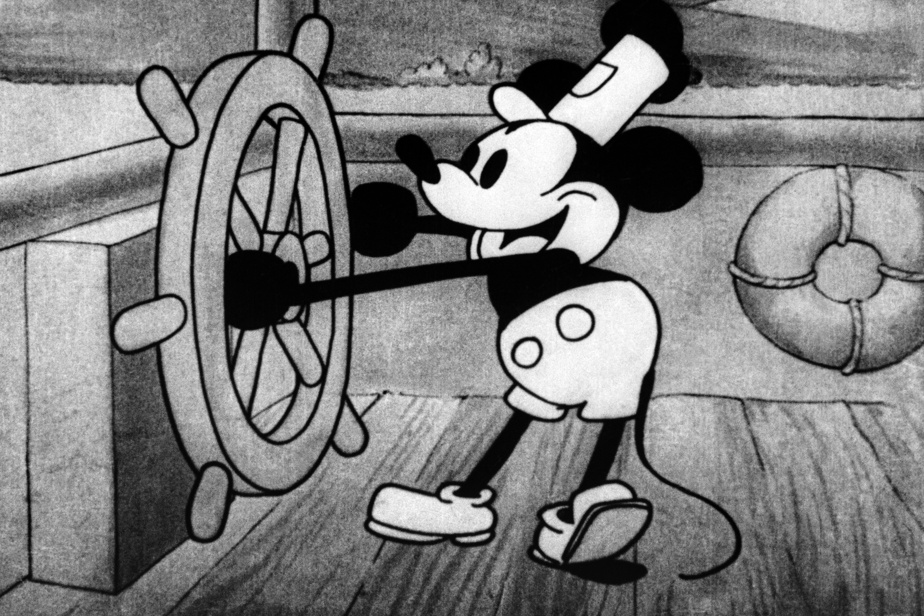(Los Angeles) Barely 24 hours after the first version of Mickey entered the public domain, two new independent horror films featuring the famous rodent have been announced.
Copyright of the cartoon Steamboat Williea 1928 black-and-white short that made Walt Disney’s creature famous, expires on 1er January, after 95 years, under US law.
A deadline which now allows any filmmaker or fan to freely copy, share, reuse or adapt the image of the characters appearing there, including Mickey and his companion Minnie.
Disney may be careful after taking measures to protect its emblematic character, but some gore fans have not hesitated to rush into the legal mouse hole offered to them.
The film Mickey’s Mouse Trap promises to follow a masked killer dressed as Mickey as he stalks a group of young friends through an arcade. And a second feature film will also delve into horror, with a sadistic mouse attacking innocent passengers on a ferry.
“We just wanted to have fun with it,” explained the director of Mickey’s Mouse Trap, Jamie Bailey, in a trailer posted on YouTube. “It’s the Mickey of Steamboat Willie who murders people. It’s ridiculous. »
This low-budget horror film is scheduled to be released in March.
For his part, director Steven LaMorte – known for The Mean One, a 2022 horror film inspired by the Grinch – told Variety magazine that he was working on his own “twisted interpretation” of Mickey. A production which does not yet have a title.
“ Steamboat Willie has brought joy to generations, but beneath this joyful appearance lies a potential for pure and disordered terror,” the director said in a press release.
Both projects recall the release of Winnie-the-Pooh: Blood and Honeyan independent production that hit the headlines after the copyright of the first Winnie the Pooh books expired.
The entire industry knows, however, that Disney closely monitors adaptations of its character and will not hesitate to call on its lawyers if someone crosses the line.
Because only the first version of Mickey, a skinny and mischievous mouse in black and white, is in the public domain. The colorful, rounder, more personable character of later films like Fantasy is not free of rights.
Additionally, trademark protection means that any film or product that could mislead consumers into thinking it was made by Disney can be prosecuted.
In a press release to AFP, the multinational Disney assured that it “continues[rait] to protect [ses] rights to newer versions of Mickey and other works remaining protected by copyright.”
But Mr. LaMorte is not afraid to play cat and mouse.
“We’re trying to make sure there’s no doubt or confusion about what we’re doing,” he told Variety. “This is our version of a public domain figure.”
